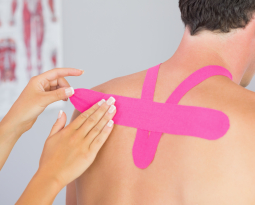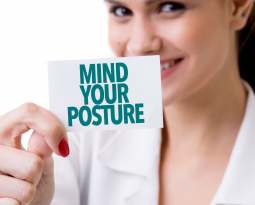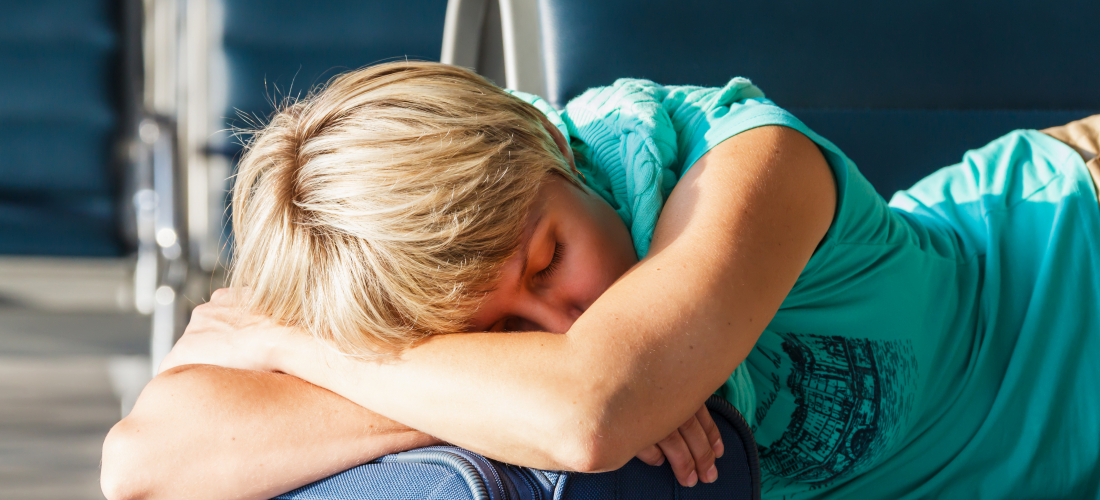
The All Time Worst Airport Postures (and what to do instead)
Airports are a scary place for posture. The next time you have a flight, please look up from your smartphone and notice the postures around you. This is a seriously eye opening experience.
It all begins with the security line. People are standing with their bags that weigh more than they do. They maintain awkward standing postures, shifting their weight from one leg to the other to support the weigh of their bag. The most significantly noticeable characteristic about “security line posture” is Tech Neck.
On a busy day in the airport you see hundreds of people looking down at their smartphone while waiting to go through security. Tech Neck posture causes a dramatic increase of pressure to their cervical spine.
Once travellers get through security and have their belongings back in their carryon bags, then the “waiting around posture” kicks in. “Waiting around posture” is even worse than the security line. In the security line at least people are standing upright and are making movements with the line.
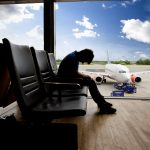 With the “waiting around posture” travellers are glued to their cell phones. They are seated with their hips forward (sometimes their legs are even propped up on their carry on suitcase). Their shoulders drop forward, and their head is hanging in forward head posture again.
With the “waiting around posture” travellers are glued to their cell phones. They are seated with their hips forward (sometimes their legs are even propped up on their carry on suitcase). Their shoulders drop forward, and their head is hanging in forward head posture again.
The “waiting around posture” is maintained until the traveller notices a low battery signal on their cell phone. In this case they get up in search of an outlet. This is where the “squatter posture” starts. They are seated on the floor, again with Tech Neck, but now with their phone plugged in. They maintain this awkward posture until the very last moment so they can charge their device before departure.
Once on the plane, this is where things get really scary. Airplane posture is the worst. Most people can be categorized into 1 of 3 categories:
- The Head Bob Head Tilt: Head bobbers are the ones sleeping on the plane with their head bobbing around. It is either in a
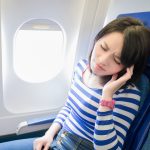 compromised head tilt, or dramatic forward head posture. With turbulence of the plane you see extra head nods. When this traveller wakes from their slumber, they usually feel like they have a “stiff neck” and have a hard time straightening their neck out of the head tilt.
compromised head tilt, or dramatic forward head posture. With turbulence of the plane you see extra head nods. When this traveller wakes from their slumber, they usually feel like they have a “stiff neck” and have a hard time straightening their neck out of the head tilt. - The Bent in Half Tray Table Lean: This is the person who couldn’t get comfortable with the head bob. So they assume the position of the tray table lean. Since these tray tables were not designed for a human being to be laying on them, they are low. The traveller has to practically bend in half in order to lay on the tray table.There is so much wrong with this posture. The most noticeable is the bent in half flexion that occurs. Then twisting the head to one side or the other adding stress to the cervical spine. When this traveller reaches their destination they usually feel neck and back pain.
- The Computer Coma Posture: These are the travellers who stay awake on the flight. They are not head bobbing or leaning on their tray table, they are in a category of their own. These are the computer coma travellers, the ones who are attached to their devices for every single minute of the flight. They are looking down at their device for hours with their head forward, shoulders forward, and a C-shaped spinal curvature of their back.When these travellers arrive they can’t remember where the time went because they were so entranced in their device. These are the travellers who tend to have the worst jet lag. The amount of blue light emission from their devices is overwhelming and can impact their sleeping pattern on vacation.
Frequent Flyer Posture Tips:
Airports and airplanes require special attention for posture habit re-education. Take it from a frequent flyer. Here are some posture tips to help you travel with better posture and prevent neck and back pain that may affect your vacation.
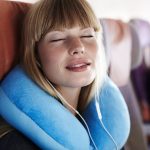 Pack a Supportive Cervical Pillow: Having a cervical pillow will help reduce head bobbing while sleeping on the airplane. The pillow helps support your head. And although it’s not perfect, it will help reduce the severity of head tilt.
Pack a Supportive Cervical Pillow: Having a cervical pillow will help reduce head bobbing while sleeping on the airplane. The pillow helps support your head. And although it’s not perfect, it will help reduce the severity of head tilt.- Use a Lumbar Support While Seated: Place a small pillow behind your lower back. This will help you sit up straight without feeling like you want to bring your hips forward and sit low in your chair. This will help you maintain proper seated posture for the duration of the flight.
- Limit Device Use: Avoid looking down for prolonged periods of time by limiting your technology usage. If using a smaller device such as a smartphone, bring the device up to eye level. You can support your arms on the armrests to hold the device up.
- Active Sitting: While seated you can still be active (even though your personal space is limited). Perform ankle circles to keep circulation moving to your feet. Stretch your arms up, and perform wrist circles to move your upper extremity. Sit up straight while performing these exercises.
- Get Up and Move: When the seatbelt sign goes off, this is your time to get up and move around. Take a walk down the aisle and even perform a hamstring stretch and a psoas stretch. These muscles are very commonly tight with prolonged sitting, so get up and move around and stretch your tight muscles (when it’s safe to do so of course).
Airport postures are hard on your body. To prevent postural decline while traveling, implement the Frequent Flyer Posture Tips. Notice how much better you feel at your destination. You will arrive feeling more alert and have less neck and back pain.
You deserve a nice getaway; don’t spend your vacation in pain due to poor posture on the airplane.
It’s posture by design, not by circumstance.


